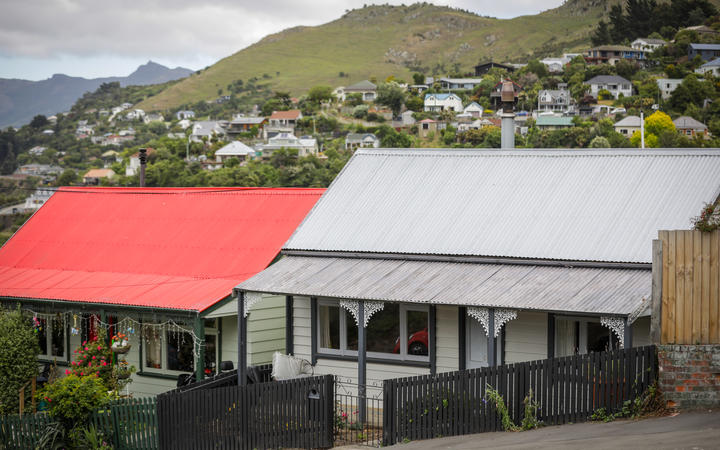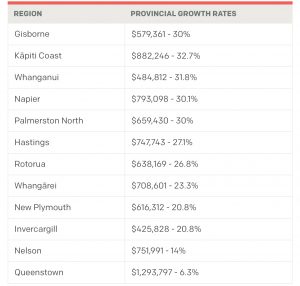New data has found a reduction in demand in nationwide housing valuations which could be the first signs of the housing market slowing.
 6File photo. Photo: RNZ / Nate McKinnon
6File photo. Photo: RNZ / Nate McKinnon
CoreLogic House Price Index tracks property value change and its latest report has found a reduction in demand of valuations, down 11 percent compared to the previous 6 months.
“There are signs that there are fewer buyers talking to banks about issuing them mortgages to buy another property,” CoreLogic Head of research Nick Goodall said.
From now until the rest of the year, the impact of the official reimplementation of the LVR is expected to cool the market.
He said anecdotes throughout April were of quieter open homes, a greater share of auctions “passing in” and fear of over paying having replaced buyers’ fears of missing out.
CoreLogic had not seen any evidence of home owners looking to exit the market however.
“Looking ahead, our expectation for future gains has been tempered, as the profitability of investment property has reduced due to the tax changes around interest deductibility.
“This will likely mean a slowing of the recent growth rate over the next few months, which will give the Reserve Bank some time to assess whether they need to announce any intention to limit interest-only loans or put a cap on high debt-to-income lending.”
According to Trade Me Property, new listings to market remained relatively steady throughout April, about 3000 new listings per week, until ANZAC weekend (1800).
The total number of properties listed for sale on Trade Me Property dropped to 22,300 by the end of the month, from 23,100 at the beginning of the month.
This meant buyers would continue to compete for a relatively small pool of advertised properties, he said.
Auckland
Auckland saw average property values rise by a further 2.4 percent in April, and the average value there is now $1.25m.
“The increase over the past 12 months has been 15.6 percent, or about $168,000. Housing affordability in our largest city continues to worsen as reflected in the reducing share of sales to first home buyers in 2021, which has dropped to 24 percent in 2021 YTD, down sharply from a peak of 29 percent in Q3 last year (and 25 percent in Q4),”
Hamilton
Strong momentum remains in Hamilton, with quarterly growth climbing to 9.4 percent and the annual rate of growth exceeding to 20.5 percent.
“This equals a rise in values over the past year of almost $130,000. The strength of the dairy sector will be supporting economic activity in and around Hamilton, and this is likely to be underpinning the property market too. Mortgaged investors have certainly been very keen on Hamilton, with a 39 percent share of purchases so far this year – but the latest policy changes will start to impact this group, almost immediately.”
Tauranga
The average property value in Tauranga now exceeds $900,000 for the first time ($922k). That is 19.0 percent higher than a year ago, which equates to a rise of more than $147,000.
“Owner occupiers moving house remain an active buyer group in Tauranga, picking up 30 percent of sales in 2021. However investors, either using a mortgage to secure the purchase or not, continue to pick up the greatest share of sales, at 45 percent so far in 2021,”
Wellington
The capital’s property values continue to increase, with the quarterly rate of growth exceeding 10.4 percent at the end of April. The annual growth rates show strength throughout the region, from 21.3 percent in Wellington (average value $1.1m) to 35 percent in Masterton (average value $579k).
“Upper Hutt’s rise over the past year has been 29.9 percent, or more than $188,000. As with many other parts of the country, however, there is now clearer evidence that these rampant gains are seeing more would-be first home buyers drop out of the market, either by choice or because prices have exceeded their borrowing capacity,”
Meanwhile the Kāpiti Coast District, as measured by the HPI, also experienced an exceptional rate of growth over the past year, with the average value appreciating to $882k at the end of April, an increase of 32.7 percent.
Kapiti’s appeal to Wellington workers continues to increase, as remote working is more widely embraced and an improved commute thanks to Transmission Gulley which inches closer.
Christchurch
The quarterly growth in average property values in Christchurch inched higher, to 6.9 percent at the end of April, pushing up the annual growth rate to 15.1 percent.
“Values in the city are now approaching $600,000 ($594k), up by almost $78,000 from a year ago.
“Christchurch remains more affordable than the other main centres, but even there, first home buyers are showing signs of ‘fatigue’, and mortgaged investors have certainly intensified the competition. They had a 27 percent share of purchases so far in 2021, a steady rise from about 21 percent two years ago.”
Dunedin
The average property values rose by a further 2.4 percent in April, although the annual rate of growth did dip slightly to 15.1 percent (from 15.4 percent at the end of March).
“This equates to a rise over the past year of more than $83,000. The sustained growth rate, which has now seen prices double in just five years, is putting pressure on prospective first home buyers, and as has been the case around the rest of NZ, mortgaged investors have been a rising presence – a 31 percent share of purchases in Dunedin in 2021 is their highest figure on record,” Goodall, said.

